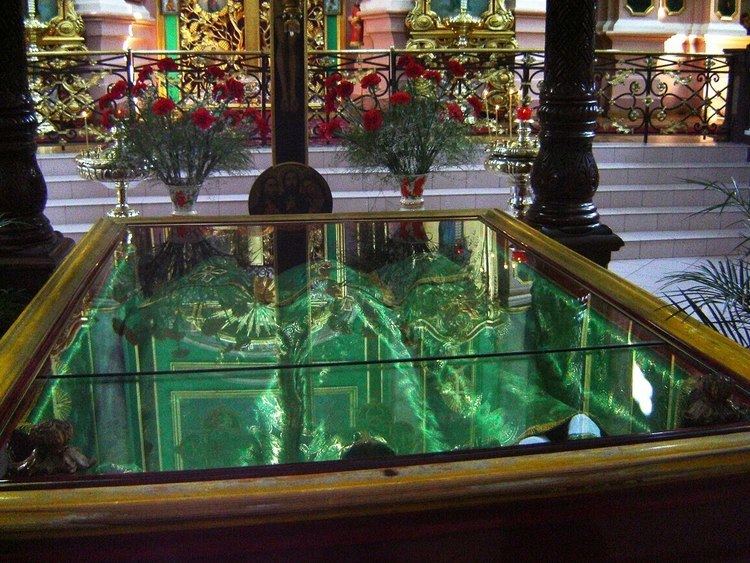 | ||
Incorruptibility is a Roman Catholic and Eastern Orthodox belief that divine intervention allows some human bodies (specifically saints and beati) to avoid the normal process of decomposition after death as a sign of their holiness. Bodies that undergo little or no decomposition, or delayed decomposition, are sometimes referred to as incorrupt or incorruptible.
Contents
Incorruptibility is thought to occur even in the presence of factors which normally hasten decomposition, as in the cases of saints Catherine of Genoa, Julie Billiart and Francis Xavier.
Roman Catholicism
In Roman Catholicism, if a body is judged as incorruptible after death, this is generally seen as a sign that the individual is a saint. Canon law allows inspection of the body so that relics can be taken and sent to Rome. The relics must be sealed with wax and the body must be replaced after inspection. These ritual inspections are performed very rarely and can only be performed by a bishop respecting canon law. A pontifical commission can authorize inspection of the relics and demand a written report. After solemn inspection of the relics, it can be decided that the body is presented in an open relicary and displayed for veneration. Catholic law allows saints to be buried under the altar, so Mass can be celebrated above the corpse.
The relics of Saint Bernadette were inspected multiple times, and reports by the church tribunal confirmed that the body was preserved. The opening of the reliquary was attended by multiple canons, the mayor and the bishop in 1919, and repeated in 1925.
Not every saint, however, is expected to have an incorruptible corpse. Although incorruptibility is recognized as supernatural, it is no longer counted as a miracle in the recognition of a saint.
Embalmed bodies were not recognized as incorruptibles. For example, although the body of Pope John XXIII remained in a remarkably intact state after its exhumation, Church officials remarked that the body had been embalmed and additionally there was a lack of oxygen in his sealed triple coffin..
Incorruptibility is seen as distinct from the good preservation of a body, or from mummification. Incorruptible bodies are often said to have the odour of sanctity, exuding a sweet or floral, pleasant aroma.
Eastern Orthodox Church
To the Eastern Orthodox Church, incorruptibility continues to be an important element for the process of glorification. An important distinction is made between natural mummification and what is believed to be supernatural incorruptibility. There are a great number of eastern Orthodox saints whose bodies have been found to be incorrupt and are in much veneration among the faithful. These include:
Instances
The saints and other Christian holy men and women whose bodies are said to be or to have been incorrupt have been catalogued in The Incorruptibles: A Study of the Incorruption of the Bodies of Various Catholic Saints and Beati, a 1977 book by Joan Carroll Cruz. Incorruptibles include:
Romans
During marble excavations on the Appian Way in Spring 1485, workers found three marble coffins. In one, twelve feet underground, was the corpse of a young woman, said to have looked as if it had been buried that day, despite being about 1500 years old. The corpse attracted 20,000 plus crowds of spectators in the first few days, many of whom believed it to be of Tullia, daughter of Cicero, whose epitaph was on one of the tombs.
